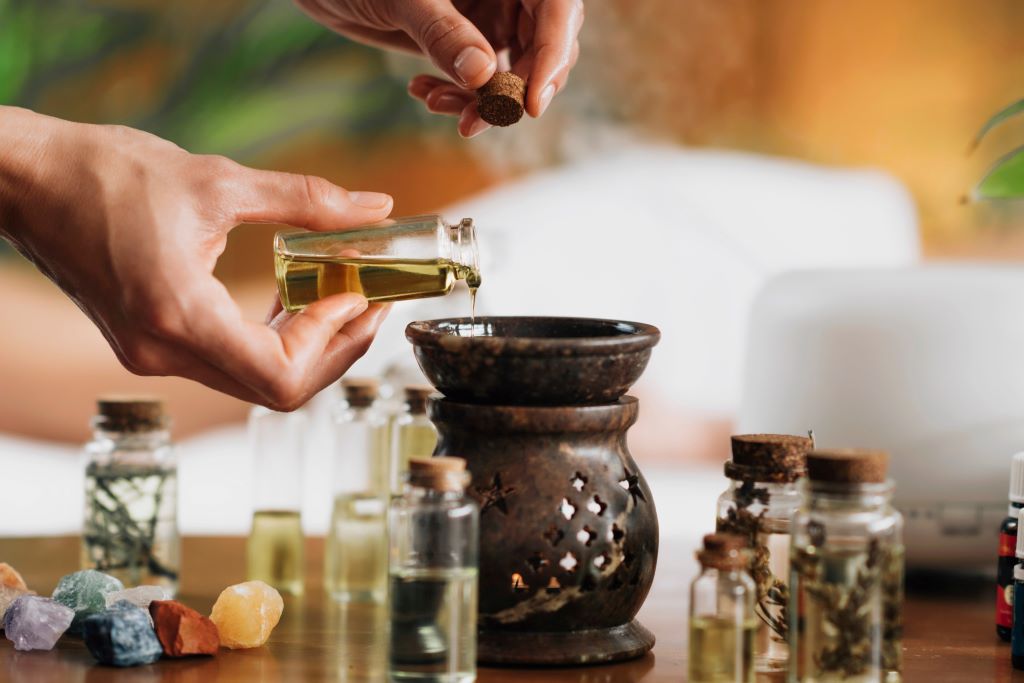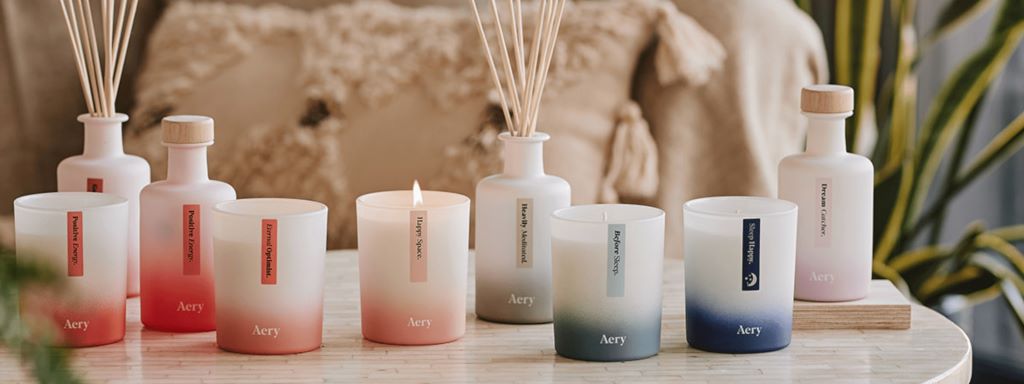Aromatherapy harnesses the incredible power of natural scents to influence our emotions, reduce stress, and promote overall wellness. This ancient practice uses essential oils extracted from plants, flowers, and herbs to create therapeutic experiences that benefit both mind and body. Modern research continues to validate what traditional cultures have known for centuries about the healing properties of aromatic compounds. Gift Teen recognizes the growing interest in wellness practices among young people, offering various aromatherapy-related products and educational resources.
The science behind aromatherapy lies in how our olfactory system connects directly to the brain’s limbic system, which controls emotions and memory. When we inhale essential oil molecules, they trigger immediate responses in areas responsible for mood regulation and stress management. Additionally, these aromatic compounds can influence hormone production and neurotransmitter activity.
Many teenagers and young adults wonder what is the monthly stuff for girls when exploring wellness subscription boxes that often include aromatherapy products. These curated collections introduce young people to various essential oils, diffusers, and scented wellness items. Therefore, monthly subscriptions provide accessible ways to explore aromatherapy’s benefits while discovering personal scent preferences.
Understanding Essential Oils and Their Properties
The Science Behind Scent and Emotion
Essential oils contain volatile organic compounds that easily evaporate and reach our olfactory receptors. These molecules bind to receptors in the nasal cavity, sending signals directly to the brain’s emotional centers. However, not all essential oils affect people the same way due to individual genetic differences and personal associations.
The limbic system processes scent information faster than other senses, explaining why certain aromas can instantly transport us to specific memories or emotional states. This rapid processing makes aromatherapy particularly effective for immediate mood enhancement and stress relief. Additionally, regular exposure to specific scents can create positive conditioning responses over time.
Research shows that different essential oil compounds interact with various neurotransmitter systems. Linalool, found in lavender, influences GABA receptors associated with relaxation. Meanwhile, limonene from citrus oils affects serotonin production linked to mood elevation. Therefore, understanding these mechanisms helps optimize aromatherapy applications for specific wellness goals.
Popular Essential Oils for Mood Enhancement
Lavender stands as the most researched essential oil for relaxation and anxiety reduction. Studies consistently demonstrate its ability to lower cortisol levels and promote restful sleep. The oil’s gentle, floral scent makes it suitable for beginners and those sensitive to stronger aromas. Additionally, lavender blends well with other oils for custom therapeutic combinations.
Peppermint oil provides invigorating effects that enhance mental clarity and combat fatigue. Its cooling menthol component stimulates circulation and creates alertness without the jittery effects of caffeine. However, peppermint’s intensity requires careful dilution to prevent overwhelming sensitive individuals.
Citrus oils like sweet orange, lemon, and bergamot offer uplifting properties that combat depression and seasonal affective disorder. These bright, cheerful scents naturally boost mood and energy levels while reducing stress hormones. Therefore, citrus aromatherapy works particularly well for morning routines and workspace environments.
Methods of Aromatherapy Application
Diffusion Techniques
Ultrasonic diffusers represent the most popular method for dispersing essential oils throughout living spaces. These devices use water and ultrasonic vibrations to create fine mist containing oil particles. The gentle process preserves oil integrity while providing hours of continuous aromatherapy benefits. Additionally, many diffusers feature LED lighting and timer functions for enhanced ambiance.
Reed diffusers offer passive aromatherapy that requires no electricity or maintenance. Natural reeds absorb oil blends and release fragrance continuously for weeks. This method works well in bedrooms, bathrooms, and small spaces where consistent subtle scenting is desired. However, oil consumption rates vary based on temperature and air circulation.
Heat-based diffusion through candle warmers or electric burners provides intense aromatherapy experiences. These methods quickly fill spaces with concentrated scents but may alter oil chemical composition through heating. Therefore, heat diffusion works best for short-term applications rather than extended therapeutic sessions.
Topical Applications and Safety
Diluted essential oils applied to skin provide localized therapeutic benefits while allowing systemic absorption. Pulse points like wrists, temples, and behind ears offer ideal application sites with good circulation. However, proper dilution ratios prevent skin irritation and sensitization reactions.
Carrier oils like jojoba, sweet almond, or coconut oil safely dilute essential oils while providing additional skin benefits. A general guideline suggests 2-3 drops of essential oil per teaspoon of carrier oil for most applications. Additionally, patch testing on small skin areas helps identify potential allergic reactions before full application.
Aromatherapy massage combines topical application with therapeutic touch for enhanced wellness benefits. This method allows deeper penetration while providing stress relief through human contact. Therefore, aromatherapy massage addresses both physical tension and emotional needs simultaneously.
Aromatherapy for Specific Mood Challenges
Managing Stress and Anxiety
Chronic stress affects millions of people worldwide, making natural management techniques increasingly valuable. Aromatherapy offers immediate stress relief without the side effects associated with pharmaceutical interventions. Specific oil blends can lower cortisol production and activate the parasympathetic nervous system responsible for relaxation responses.
Chamomile essential oil provides gentle anxiety relief particularly effective for those new to aromatherapy. Its mild, apple-like scent creates calming effects without sedation. However, individuals with ragweed allergies should exercise caution with chamomile products due to potential cross-reactions.
Frankincense oil offers grounding properties that help manage overwhelming emotions and racing thoughts. This ancient oil promotes deep breathing and mindful awareness that interrupts anxiety spirals. Additionally, frankincense supports meditation and spiritual practices that enhance overall emotional resilience.
Combating Depression and Low Mood
Seasonal affective disorder and general depression respond well to specific aromatherapy interventions. Bright, uplifting scents can stimulate serotonin production and counter the neurotransmitter imbalances associated with depressive episodes. However, aromatherapy works best as part of comprehensive treatment approaches including professional support.
Ylang-ylang oil provides euphoric effects that naturally elevate mood and reduce feelings of sadness. Its exotic floral scent creates positive associations while influencing emotional brain centers. The oil’s hormone-balancing properties particularly benefit women experiencing mood fluctuations related to menstrual cycles.
Rosemary essential oil enhances cognitive function while improving mood through increased mental clarity. This herbal scent fights mental fatigue and promotes confidence through enhanced focus abilities. Therefore, rosemary aromatherapy works well for students and professionals facing demanding intellectual challenges.
Improving Sleep Quality
Sleep disorders affect mood regulation and overall wellness, making aromatherapy sleep support particularly valuable. Certain essential oils promote relaxation and trigger natural sleep cycles without dependency risks. Additionally, consistent bedtime aromatherapy routines create positive sleep associations that improve long-term sleep quality.
Cedarwood oil provides woodsy, grounding scents that naturally promote drowsiness and deeper sleep phases. Its sedating properties work particularly well for individuals with racing minds that prevent sleep onset. However, cedarwood’s strong aroma requires careful dosing to avoid overwhelming sensitive individuals.
Roman chamomile offers gentler sleep support than German chamomile while providing similar relaxation benefits. This oil works well in children’s bedrooms and for individuals preferring subtle scents. Additionally, Roman chamomile blends beautifully with lavender for enhanced sleep-promoting effects.
Creating Personal Aromatherapy Routines
Morning Energy Blends
Starting days with energizing aromatherapy sets positive tones for productivity and emotional balance. Citrus-based blends naturally align with circadian rhythms while providing vitamin D-like mood benefits. These bright scents combat morning grogginess and seasonal depression symptoms effectively.
Eucalyptus oil clears mental fog while providing respiratory benefits that enhance oxygen intake. Its invigorating camphor-like scent creates alertness without anxiety or jitters. However, eucalyptus requires proper ventilation due to its intensity and potential respiratory irritation in sensitive individuals.
Rosemary and peppermint combinations create powerful focus-enhancing blends perfect for students and professionals. These herbal-mint combinations improve memory retention while maintaining sustained energy levels. Therefore, morning aromatherapy routines support both immediate alertness and long-term cognitive performance.
Evening Relaxation Protocols
Consistent evening aromatherapy routines signal the nervous system to begin winding down for restorative sleep. Warm, comforting scents naturally lower stress hormones and promote melatonin production. Additionally, regular evening aromatherapy creates behavioral cues that improve sleep onset timing.
Sandalwood oil provides luxurious, meditative scents that promote deep relaxation and spiritual connection. Its warm, woody aroma naturally slows breathing and heart rate while encouraging introspection. However, high-quality sandalwood commands premium prices due to sustainable harvesting challenges.
Clary sage offers hormone-balancing properties particularly beneficial for women experiencing PMS or menopausal symptoms. Its herbal-floral scent provides euphoric relaxation while supporting emotional stability. Therefore, clary sage evening routines address both immediate relaxation needs and longer-term hormonal wellness.
Aromatherapy in Different Life Stages
Teenage Wellness Applications
Adolescents face unique emotional challenges including academic pressure, social anxiety, and hormonal fluctuations. Gentle aromatherapy applications can provide natural support without interfering with developing brain chemistry. However, proper education about safe usage prevents potential problems with concentrated essential oils.
Sweet orange and vanilla blends offer comforting, non-threatening scents that appeal to younger users while providing genuine mood benefits. These familiar aromas create positive associations without the complexity of more exotic oils. Additionally, these gentle options allow safe experimentation with aromatherapy principles.
Peppermint study blends help teenagers maintain focus during homework and test preparation. Controlled amounts of peppermint oil enhance concentration without causing distraction or overstimulation. Therefore, aromatherapy can support academic success while teaching valuable wellness skills.
Adult Stress Management
Working adults face chronic stress from career demands, family responsibilities, and financial pressures. Aromatherapy provides accessible stress relief that fits into busy schedules without requiring significant time investments. Additionally, workplace-appropriate aromatherapy methods allow stress management during demanding days.
Bergamot oil offers sophisticated stress relief that works well in professional environments. Its subtle citrus-floral scent provides mood elevation without drawing unwanted attention. However, bergamot can increase photosensitivity, requiring caution with sun exposure after topical application.
According to research published by the Mayo Clinic, aromatherapy shows promising results for reducing anxiety and improving quality of life when used as part of comprehensive wellness approaches.
Senior Wellness Support
Older adults often experience memory challenges, depression, and sleep disturbances that respond well to aromatherapy interventions. Gentle, familiar scents can trigger positive memories while providing therapeutic benefits. Additionally, aromatherapy offers social activities when shared with caregivers or family members.
Lemon balm essential oil provides memory support while offering gentle mood elevation suitable for sensitive individuals. Its mild citrus-herbal scent creates pleasant environments without overwhelming compromised sensory systems. Therefore, lemon balm works well in senior living facilities and home care settings.

Safety Considerations and Best Practices
Proper Dilution and Usage Guidelines
Essential oil safety requires understanding proper dilution ratios and application methods. Concentrated oils can cause skin burns, respiratory irritation, and allergic reactions when used improperly. However, following established guidelines ensures safe enjoyment of aromatherapy benefits.
Never apply undiluted essential oils directly to skin except in emergency situations with specific oils like lavender. Even “gentle” oils can cause sensitization reactions that prevent future use. Additionally, internal consumption of essential oils requires professional guidance due to toxicity risks.
Pregnancy and nursing require special aromatherapy precautions due to hormonal sensitivity and potential effects on developing babies. Some oils like clary sage can stimulate contractions, while others may affect milk production. Therefore, pregnant women should consult healthcare providers before beginning aromatherapy programs.
Quality and Sourcing Considerations
Essential oil quality varies dramatically between suppliers, affecting both safety and therapeutic effectiveness. Pure, properly distilled oils provide maximum benefits while adulterated products may contain harmful additives. However, premium quality often commands higher prices that reflect careful sourcing and processing.
Look for suppliers providing gas chromatography-mass spectrometry testing results that verify oil purity and composition. These scientific analyses identify adulterants and confirm therapeutic compound concentrations. Additionally, reputable suppliers offer organic certifications and sustainable harvesting information.
Storage conditions significantly impact essential oil longevity and effectiveness. Dark glass bottles protect oils from light degradation while proper temperature control prevents oxidation. Therefore, proper storage maximizes both safety and therapeutic value of aromatherapy investments.
Scientific Research and Evidence
Clinical Studies and Findings
Growing scientific literature supports aromatherapy’s effectiveness for various wellness applications. Controlled studies demonstrate measurable improvements in anxiety, depression, sleep quality, and cognitive function with proper essential oil usage. However, research continues to explore optimal applications and mechanisms of action.
A comprehensive review published in the International Journal of Nursing Studies found significant evidence supporting aromatherapy for anxiety reduction and sleep improvement in healthcare settings. These findings validate traditional uses while establishing scientific credibility for aromatherapy applications.
Neuroimaging studies reveal specific brain activity changes associated with essential oil inhalation. These objective measurements confirm subjective reports of mood improvement and stress reduction. Additionally, physiological markers like cortisol levels provide quantifiable evidence of aromatherapy’s therapeutic effects.
Future Research Directions
Ongoing research explores personalized aromatherapy approaches based on genetic factors and individual response patterns. This precision medicine approach could optimize therapeutic outcomes while minimizing adverse reactions. However, such personalization requires extensive research and technological development.
Combination therapies integrating aromatherapy with other wellness modalities show promising results for enhanced therapeutic outcomes. These synergistic approaches may provide more comprehensive benefits than single-modality treatments. Therefore, future aromatherapy applications may emphasize integration rather than standalone usage.
Conclusion
Aromatherapy offers scientifically-supported methods for improving mood and overall wellness through the power of natural scents. From stress relief and anxiety management to sleep enhancement and cognitive support, essential oils provide accessible therapeutic benefits for people of all ages. Additionally, proper understanding of safety guidelines and quality considerations ensures positive experiences with aromatherapy applications.
The growing body of scientific evidence validates traditional aromatherapy practices while revealing new applications and mechanisms of action. Modern diffusion methods and quality control measures make aromatherapy more accessible and reliable than ever before. Therefore, incorporating aromatherapy into daily wellness routines can provide significant benefits for mental and emotional health.
Key principles for successful aromatherapy include understanding individual responses, following safety guidelines, and choosing quality oils from reputable sources. Consistency in application and realistic expectations help maximize therapeutic benefits while preventing disappointment. The future of aromatherapy continues to evolve with advancing research and innovative application methods.
Frequently Asked Questions
Is aromatherapy safe for teenagers and young adults? Yes, aromatherapy is generally safe for teenagers when using proper dilution ratios and age-appropriate oils. Avoid oils contraindicated for young people and always dilute properly. Additionally, start with gentle oils like lavender or sweet orange before progressing to stronger options.
How long does it take to notice aromatherapy benefits? Many people experience immediate effects from aromatherapy, especially for mood and stress relief. However, some benefits like improved sleep patterns may take several weeks of consistent use. Therefore, patience and regular application optimize therapeutic outcomes.
Can essential oils replace prescription medications for anxiety or depression? Aromatherapy can complement traditional treatments but should not replace prescribed medications without medical supervision. Essential oils provide supportive benefits alongside professional mental health care. However, severe anxiety or depression requires comprehensive treatment approaches.
What’s the difference between synthetic and natural essential oils? Natural essential oils are extracted directly from plants and contain complex chemical profiles that synthetic versions cannot replicate. Natural oils provide full therapeutic benefits while synthetic fragrances offer only scent without wellness properties. Therefore, choose natural oils for aromatherapy applications.
How do I know if I’m allergic to essential oils? Perform patch tests by applying diluted oil to small skin areas and waiting 24 hours for reactions. Signs of sensitivity include redness, itching, burning, or swelling. Additionally, respiratory symptoms like coughing or wheezing indicate potential airborne sensitivity to specific oils.
Read More:



